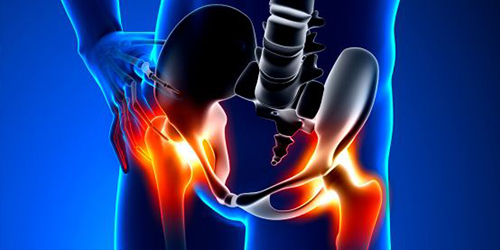How COVID-19 can damage your bones: Avascular necrosis of the hip joint
Avascular necrosis (AVN) is a condition where the bone tissue of the hip joint dies due to lack of blood supply. This can cause pain, stiffness, and eventually collapse of…
By Admin | 10 January 2024Avascular necrosis (AVN) is a condition where the bone tissue of the hip joint dies due to lack of blood supply. This can cause pain, stiffness, and eventually collapse of the bone, leading to arthritis and disability.
AVN affects the femoral head, which is the ball-shaped part of the thigh bone that fits into the socket of the hip. The femoral head is the most common site of AVN, and it usually occurs in people between the ages of 30 and 50.
Some of the symptoms of AVN of the hip joint are:
- Pain in the hip, groin, thigh, or buttock
- Difficulty moving the hip or walking
- Limping or reduced range of motion
- Bone fracture or joint collapse
Some of the complications of AVN of the hip joint are:
- Osteoarthritis, which is the wearing away of the cartilage that cushions the joint
- Bone deformity, which can affect the shape and function of the joint.
AVN of the hip joint can have various causes, such as trauma, steroid use, alcohol abuse, or certain diseases that affect blood flow. However, the exact mechanism and risk factors are not well understood, and more research is needed to confirm the causal link between COVID-19 and AVN.
Some of the factors that may contribute to the development of AVN after COVID-19 infection are:
Steroid use: Steroids are often used to treat severe COVID-19 cases, but they can also impair blood flow to the bones and increase the risk of AVN. Steroids can affect the metabolism of fat cells, which can clog the blood vessels and reduce oxygen supply to the bone tissue. Steroids can also increase the levels of inflammatory cytokines, which can damage the bone cells and cause cell death.
- Inflammation: COVID-19 infection can trigger a systemic inflammatory response, which can affect various organs and tissues, including the bones. Inflammation can cause the release of pro-inflammatory cytokines, such as interleukin-6 (IL-6) and tumor necrosis factor-alpha (TNF-α), which can induce bone resorption and inhibit bone formation. Inflammation can also increase the permeability of the blood vessels, which can lead to edema and increased pressure within the bone, resulting in reduced blood flow and oxygen delivery.
- Clotting abnormalities: COVID-19 infection can cause hypercoagulability, which is a state of increased tendency to form blood clots. This can lead to thrombosis, which is the formation of blood clots within the blood vessels, blocking the blood flow and causing ischemia (lack of oxygen) to the affected tissue. Thrombosis can occur in any part of the body, including the bones, and can cause AVN.
AVN is diagnosed using imaging techniques that can show the changes in the bone tissue and blood flow. Some of the common imaging techniques are:
- X-rays: They can reveal bone changes that occur in the later stages of AVN, such as fractures or collapse of the bone. However, they are not very sensitive in detecting early stages of AVN, when the bone appears normal.
- MRI and CT scan: These tests produce detailed images that can show early changes in bone that might indicate AVN, such as decreased signal intensity or irregular shape of the bone. They can also measure the extent and severity of the bone damage. MRI is considered the most accurate and reliable imaging technique for diagnosing AVN.
The treatment options for AVN of the hip joint depend on the stage, severity, and cause of the condition. The goal is to prevent further bone loss, relieve pain, and restore function. Some of the possible treatment options are:
- Non-surgical treatments: These include medications, physiotherapy, and assistive devices. Medications may consist of nonsteroidal anti-inflammatory drugs (NSAIDs), bisphosphonates, cholesterol-lowering drugs, blood thinners, or iloprost. Physiotherapy may involve exercises, electrical stimulation, hyperbaric oxygen, or extracorporeal shock wave therapy. Assistive devices may include crutches, canes, or walkers to reduce the weight on the affected hip.
- Surgical treatments: These include core decompression, bone transplant, bone reshaping, or joint replacement. Core decompression involves removing part of the inner layer of bone to create more space and blood flow. Bone transplant involves grafting healthy bone tissue from another part of the body or a donor to the damaged area. Bone reshaping involves cutting and realigning the bone to reduce stress on the joint. Joint replacement involves removing and replacing the damaged joint with an artificial one.
The choice of treatment depends on various factors, such as the age, health, and preferences of the patient, as well as the availability and effectiveness of the options. The best treatment option should be discussed with a doctor who can evaluate the condition and recommend the most suitable course of action.

AVN of the hip joint after COVID-19 infection is a serious condition. It is important to be aware of this possible complication and prevent it by taking the following measures:
- Avoid excessive or prolonged use of steroids, which can increase the risk of AVN. Steroids should be used only as prescribed by a doctor and under close monitoring.
- Maintain a healthy lifestyle, such as eating a balanced diet, exercising regularly, quitting smoking, and limiting alcohol intake. These habits can improve blood circulation, reduce inflammation, and prevent bone loss.
- Seek medical attention if you experience any hip pain or stiffness, especially if you have a history of COVID-19 infection. Early diagnosis and treatment of AVN can prevent further bone damage and improve the outcome.
By being aware and proactive, you can protect your hip joints and prevent AVN after COVID-19 infection.






